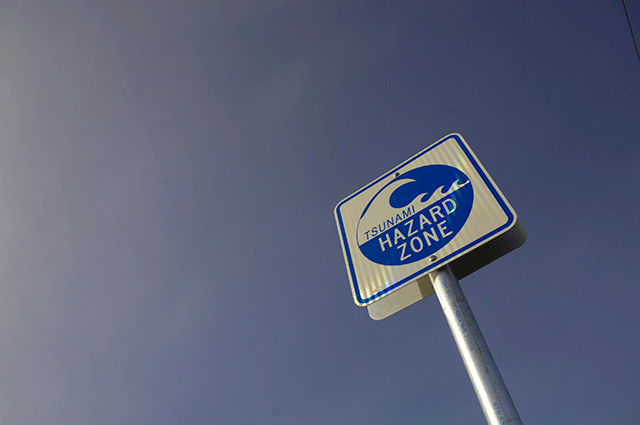
For the past 20 years, Humboldt County fairgoers have stopped by the Earthquake-Tsunami Room to learn about the powerful quakes and waves that shape the North Coast. In 2020, due to the coronavirus pandemic, there was no Humboldt County Fair for the first time since World War II. In response, the Redwood Coast Tsunami Work Group (RCTWG) and the Humboldt Earthquake Education Center at HSU partnered to create the Virtual Earthquake-Tsunami Fair, which launched this week, just in time for the Great ShakeOut this Thursday, October 15. During the ShakeOut more than 11 million earthquake drills will take place across the country.
“Our Virtual Fair is an interactive, web-based display that allows visitors to wander through our exhibits much as they would have walked through the real displays,” explains RCTWG member Lori Dengler, a emeritus professor of Geology at Humboldt State and renowned tsunami expert.
The RCTWG formed in 1996 to better understand the threats posed by big earthquakes and tsunamis and inform the public. “We had developed the Living on Shaky Ground magazine, but needed new ways to push the information out,” remembers Dengler.
For two decades, the Humboldt County Fair has been a fun and effective platform to reach wide audiences, while also involving HSU students in disaster preparedness education. Fairgoers may remember the tsunami wave tank, on permanent loan from HSU’s Engineering department. Kids could crank the handle to learn how wave speed depends on water depth—all without getting wet.
Features of this year’s event include the virtual tsunami theater and the Kid’s Corner, where children can hear the heartwarming story of Kamome, the little boat that survived a tsunami from Japan to Crescent City. Red balloons represent various features of the Virtual Fair, including “Know Your Zone” maps, a section on tsunami debris, and how to prepare your family for natural disasters on the North Coast.
HSU students have always been important contributors to the fair, and 2020 is no exception. Several of the scientists who designed the Virtual Fair exhibits are HSU alumni. Jason Patton (‘04, Geology) and Nick Graeh (‘12, Geology) are both senior scientists at the California Geological Survey and part of the CGS team that created the virtual fair’s tsunami hazard maps. Fellow alumnus Todd Becker (‘05,Geology), who works for the California Office of Emergency (CalOES), also volunteered his time getting the Virtual Fair off the ground. CalOES is the fiscal sponsor of both past physical exhibits and this year’s virtual fair.
Current HSU students also helped make the Virtual Earthquake-Tsunami Fair a reality. HSU geology professor Amanda Admire asked her geoscience students to create the site’s FAQ section and review the fair for use and functionality.
“Bringing together various agencies, students, professors, and alumni is a great example of the strength of the campus community,” says Dengler.
Unlike the in-person fair, the Virtual Earthquake-Tsunami room will be open indefinitely. Go to the 2020 Virtual Earthquake-Tsunami Fair website for more information.